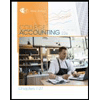Following is selected information relating to the operations of Shilow Company, a wholesale distributor: Current assets as of March 31: Cash Accounts receivable Inventory Plant and equipment, net Accounts payable Capital shares Retained earnings. a. Gross margin is 25% of sales. b. Actual and budgeted sales data are as follows: March (actual) April May June July $135,000 162,000 $ 43,000 54,000 97,200 236,000 81,200 320,000 29,000 174,000 192,000 133,000 c. Sales are 60% for cash and 40% on credit. Credit sales are collected in the month following sale. The accounts receivable at March 31 are a result of March credit sales. d. At the end of each month, inventory is to be on hand equal to 80% of the following month's sales needs, stated at cost. e. One-half of a month's inventory purchases are paid for in the month of purchase; the other half are paid for in the following month. The accounts payable at March 31 are a result of March purchases of inventory. f. Monthly expenses are as follows: salaries and wages, 12% of sales; rent, $9,500 per month; other expenses (excluding depreciation), 6% of sales. Assume that these expenses are paid monthly. Depreciation is $2,600 per month (includes depreciation on new assets). g. Equipment costing $3,200 will be purchased for cash in April. h. The company must maintain a minimum cash balance of $11,000. An open line of credit is available at a local bank. All borrowing is done at the beginning of a month, and all repayments are made at the end of a month; borrowing must be in multiples of $1,000. The annual interest rate is 12%. Interest is paid only at the time of repayment of principal; figure interest on whole months (1/12, 2/12, and so forth).
Reporting Cash Flows
Reporting of cash flows means a statement of cash flow which is a financial statement. A cash flow statement is prepared by gathering all the data regarding inflows and outflows of a company. The cash flow statement includes cash inflows and outflows from various activities such as operating, financing, and investment. Reporting this statement is important because it is the main financial statement of the company.
Balance Sheet
A balance sheet is an integral part of the set of financial statements of an organization that reports the assets, liabilities, equity (shareholding) capital, other short and long-term debts, along with other related items. A balance sheet is one of the most critical measures of the financial performance and position of the company, and as the name suggests, the statement must balance the assets against the liabilities and equity. The assets are what the company owns, and the liabilities represent what the company owes. Equity represents the amount invested in the business, either by the promoters of the company or by external shareholders. The total assets must match total liabilities plus equity.
Financial Statements
Financial statements are written records of an organization which provide a true and real picture of business activities. It shows the financial position and the operating performance of the company. It is prepared at the end of every financial cycle. It includes three main components that are balance sheet, income statement and cash flow statement.
Owner's Capital
Before we begin to understand what Owner’s capital is and what Equity financing is to an organization, it is important to understand some basic accounting terminologies. A double-entry bookkeeping system Normal account balances are those which are expected to have either a debit balance or a credit balance, depending on the nature of the account. An asset account will have a debit balance as normal balance because an asset is a debit account. Similarly, a liability account will have the normal balance as a credit balance because it is amount owed, representing a credit account. Equity is also said to have a credit balance as its normal balance. However, sometimes the normal balances may be reversed, often due to incorrect journal or posting entries or other accounting/ clerical errors.


Step by step
Solved in 3 steps









